
Lot 437
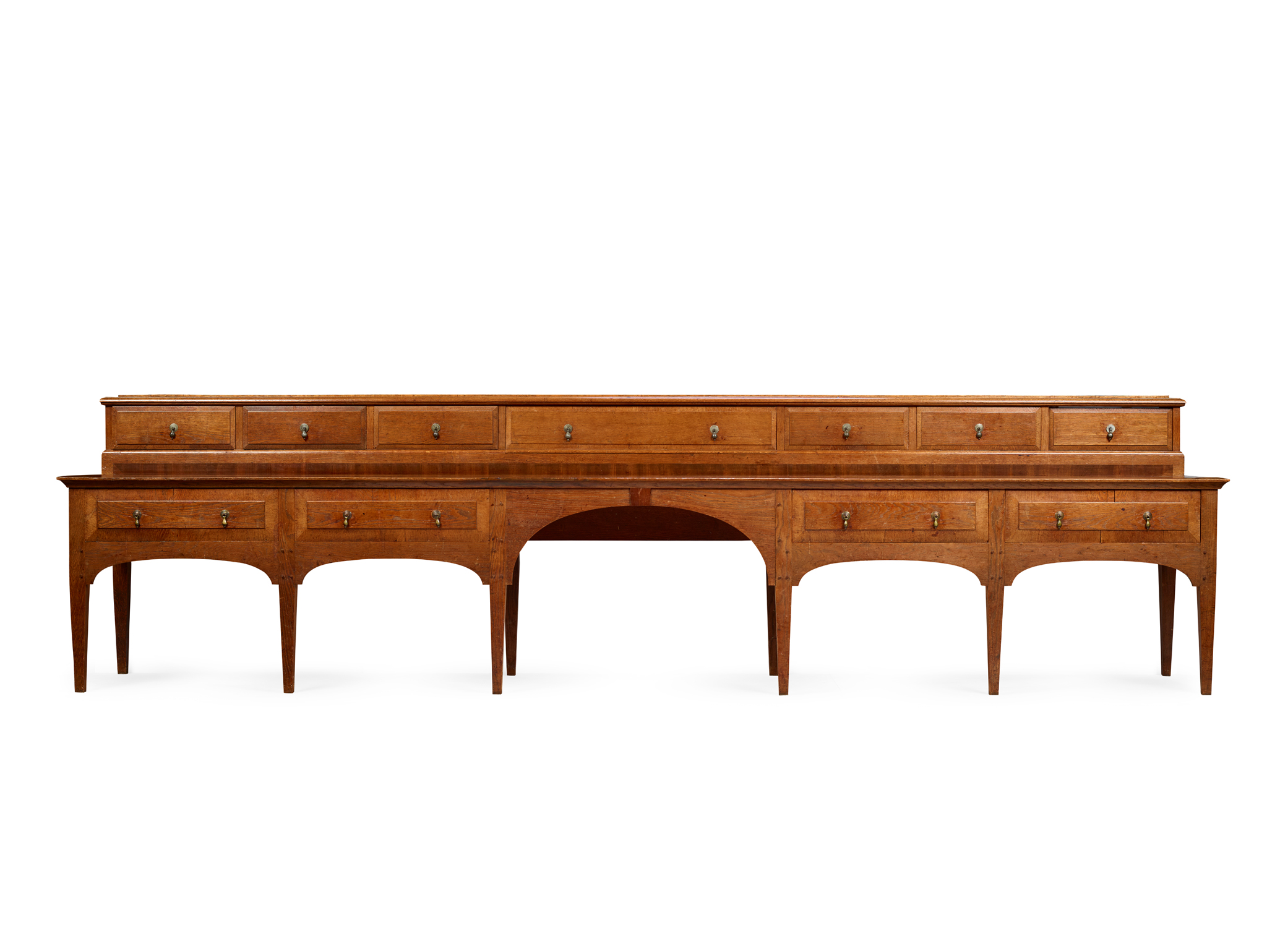
SIR EDWIN LUTYENS (1869-1944)
SIDEBOARD FOR DEANERY GARDEN, 1900
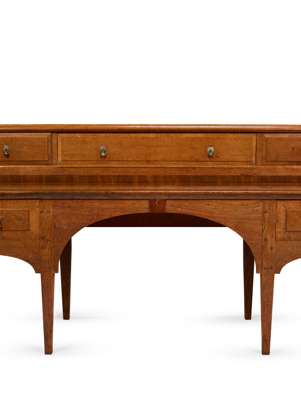
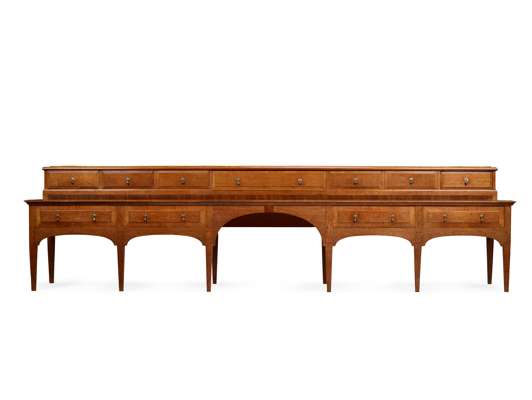
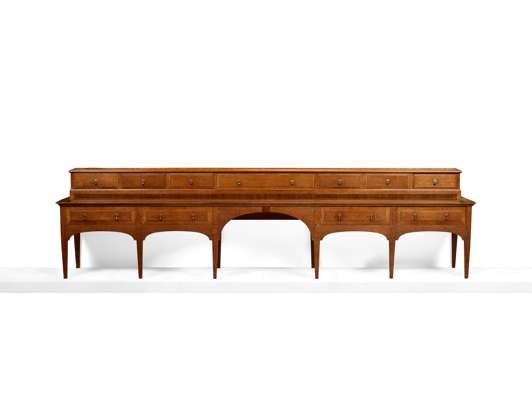
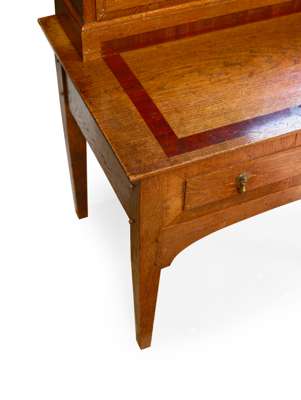
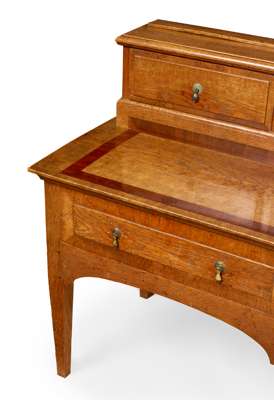
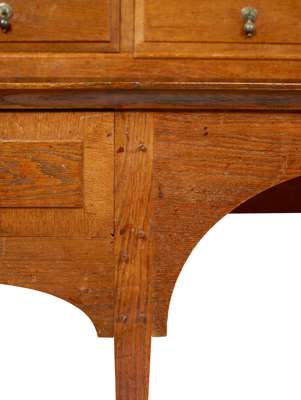








Auction: Day Two inc FL Griggs : A Cotswold Legacy | Lots 334 to 654 | Thursday 16th October from 10am
Description
oak, with mahogany banding and brass and pewter drop-handles, bears exhibition label verso
Dimensions
333cm wide, 85.7cm high, 50.5cm deep
Provenance
Edward Hudson, Deanery Garden, Berkshire
Private Collection
Footnote
Exhibited: London, Hayward Gallery Lutyens: The Work of the English Architect Sir Edwin Lutyens (1869-1944), 18 November 1981-31 January 1982, no. 132/5
Literature: Stamp G. Edwin Lutyens Country Houses from the Archives of Country Life, Aurum Press 2001, p.89 where the sideboard, 'loaded with Edward Hudson's collection of china and pewter', is illustrated in situ.
Sir Edwin Lutyens is renowned for his architectural achievements, including Castle Drogo, Little Thakeham, and Campion Hall, as well as his role in designing war memorials for the Imperial War Graves Commission and in planning New Delhi. Yet his influence extended beyond architecture into furniture design, where he demonstrated the same meticulous attention to detail and craftsmanship that defined his buildings.
Raised in the Surrey countryside, Lutyens developed a passion for architecture from an early age, spending his childhood sketching buildings and refining his draughtsmanship. Though illness prevented him from attending public school, his early immersion in the practicalities of construction shaped his architectural outlook. By the age of twenty, he had established his own practice in London, combining technical knowledge with an intuitive grasp of proportion and spatial relationships—an understanding that carried naturally into his approach to furniture.
The sideboard offered here was conceived as part of the dining room scheme at Deanery Garden in Sonning, Berkshire, a quintessential Lutyens property built 1899–1901. Country Life concluded in 1903, the year Hudson sold the house, that “Mr Lutyens never designed a more perfect house or a more charming garden”. The dining room, in keeping with the vernacular aesthetic of the house was simple furnished with antique oak furniture along with pieces which Lutyens designed for the room, including the ladderback dining chairs and the sideboard.
Lutyens’ furniture is characterised by eclecticism, drawing on historical models while adapting and reinterpreting them with his own distinctive sensibility. This sideboard is no exception with its design and construction rooted in the 18th century but with Lutyens subverting the design. He seldom reproduced designs verbatim; rather, he subtly recalibrated scale, proportion and detailing to suit the architectural setting. His dislike of “dead proportions” is well documented: he frequently adjusted standard measurements, making them marginally larger or smaller than conventional halves or quarters in order to enliven the rhythm of a piece.













